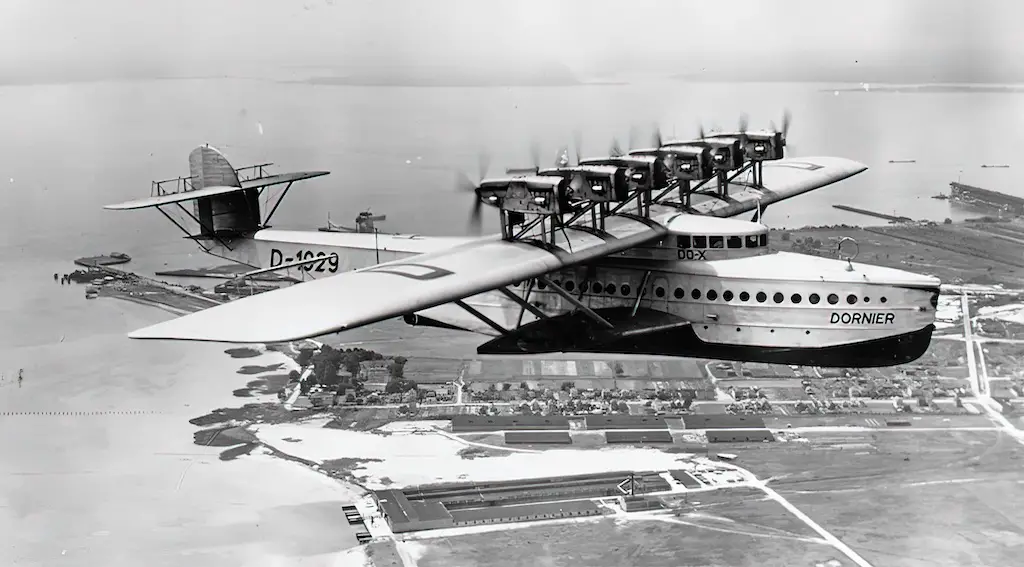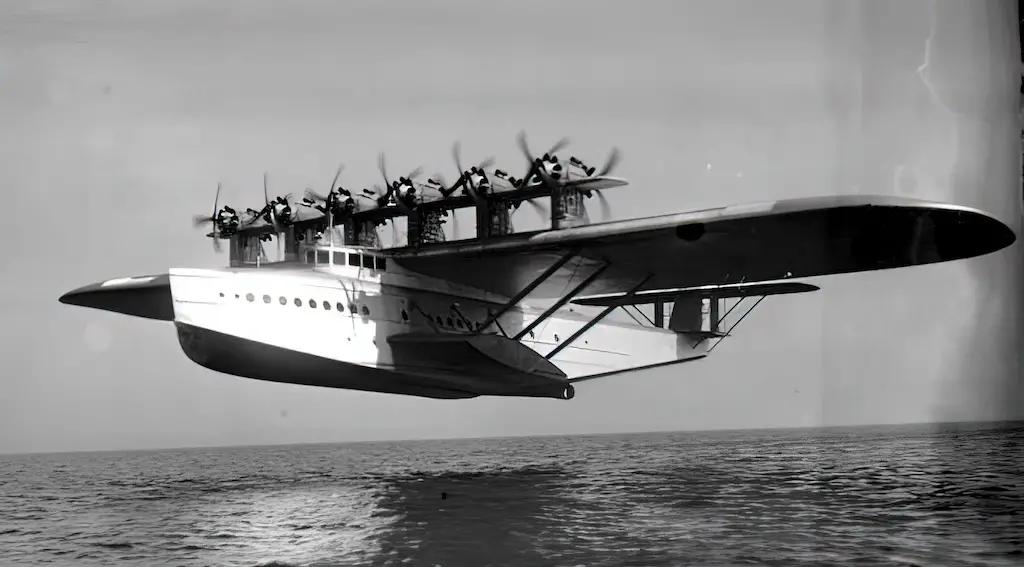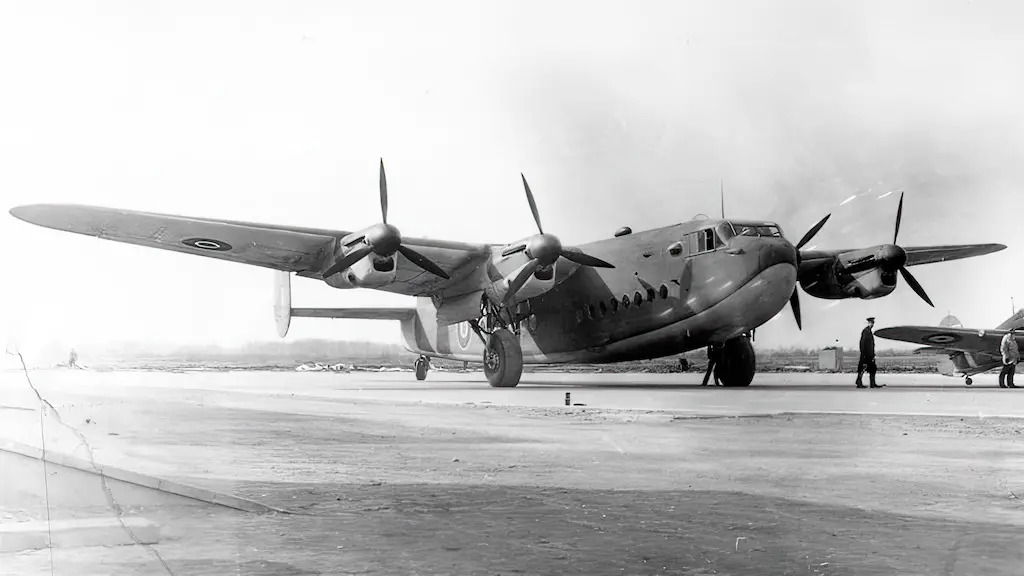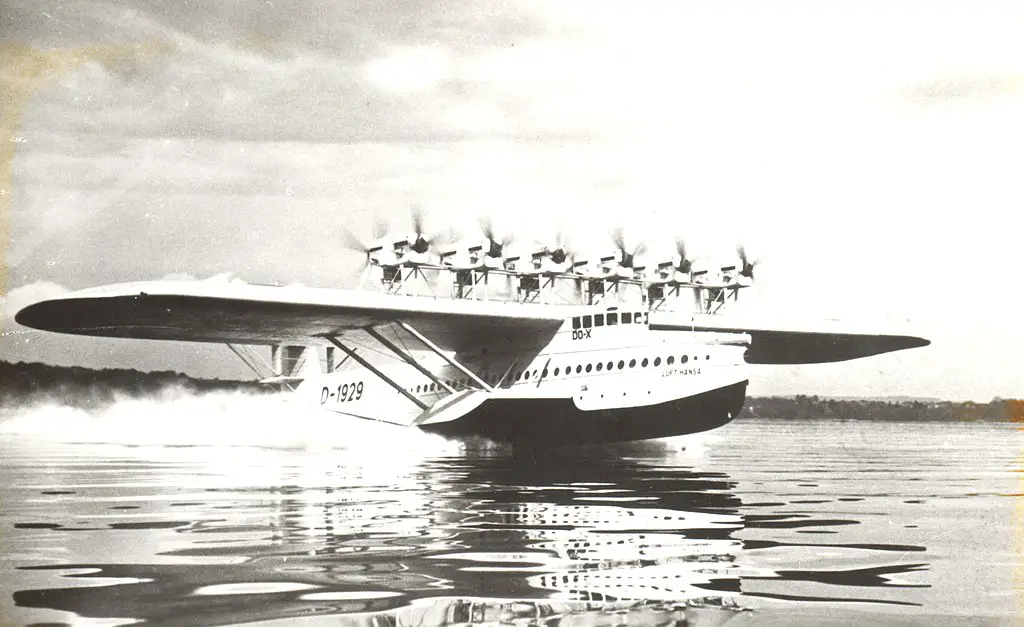It was something of an Airbus A380 of its time — a luxurious aircraft capable of carrying over 100 passengers. Do X was a truly grandiose plane, rivaling transatlantic liners and zeppelins. Three decks placed inside an all-duralumin hull featured sleeping quarters for passengers, a bar, a smoking room, and a dining room.

Leviathan among its contemporaries
Claude Dornier started working on the Do X design in 1924. With its 131 ft long fuselage, a wingspan of 156 ft and a gross weight of 108,027 lbs, Do X was the largest flying boat of the time. This giant was propelled by twelve engines arranged in a tractor-pusher configuration. At first 524 hp Siemens-built Bristol Jupiter engines were used, but later the aircraft was refitted with more powerful 610 hp Curtiss V-1570 Conqueror motors. Two airframes employed Fiat A-22R V12 engines. Operating this machinery was a crew of up to 14 people. Just like on an ocean liner, the Captain would not throttle an engine himself, but issue a relevant order to the flight engineer.
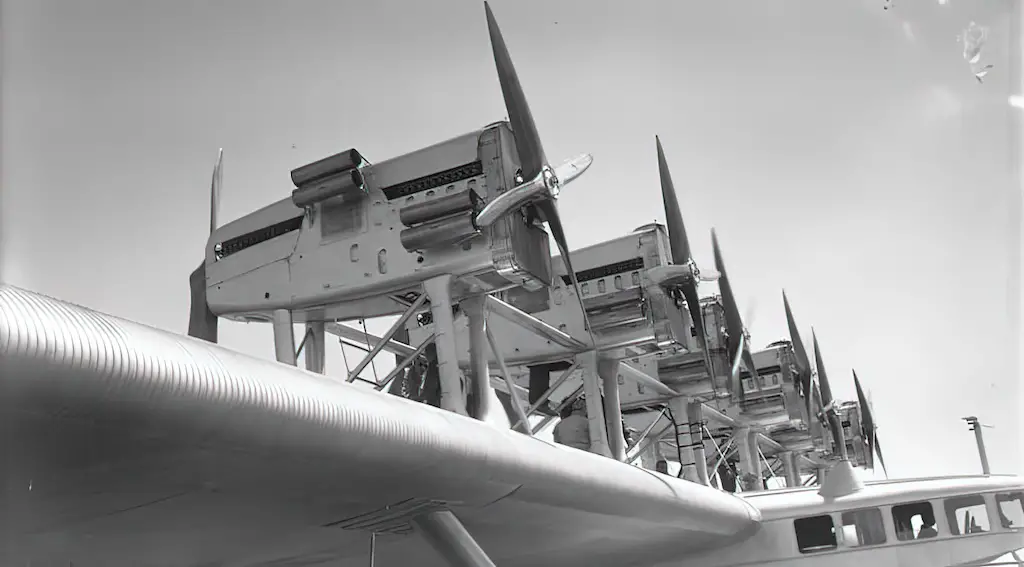
All in all, three Do X airframes were built. Two of them were operated by Italy and one by Germany. The Italian ones were named Do-X2 ‘Umberto Maddalena’ and Do-X3 ‘Alessandro Guidoni’. It’s worth mentioning that at the time of Do X’s creation, Germany was still under a number of restrictions imposed on it by the Treaty of Versailles. For that reason, the first aircraft was assembled at a factory in Altenrhein, on the Swiss shore of the Lake Constance.
Long journey across the ocean
The German Do X made some remarkable flights during the short period of its operation. In 1929 in a short flight near the Lake Constance it carried 169 people onboard, setting a world record that would hold for two decades. In November 1931 Do X set on a long publicity tour that lasted one and a half years.
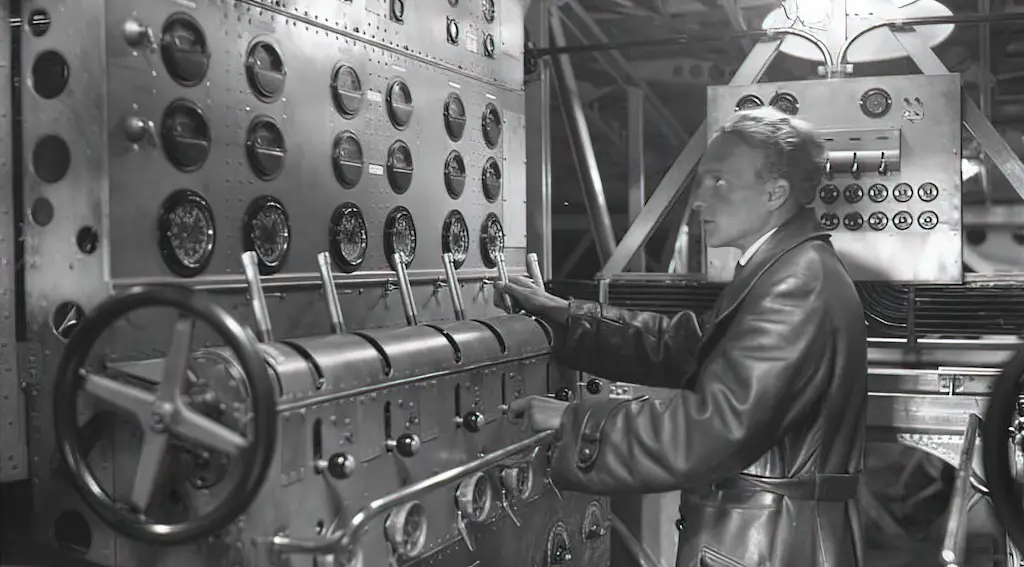
Starting from Friedrichshafen on the German shore of the Lake Constance it first visited Britain, France, Spain and Portugal. It then spent six weeks in Lisbon while the aircraft’s left wing damaged by a fire incident was under repairs. From there it proceeded to Brazil via Cape Verde. It also visited San Juan, Puerto Rico, before reaching New York, US. There it remained on public display at Glenn Curtis Airport for several months. On the return journey to Germany Do X visited the Canadian island of Newfoundland and the Azores.
A plane ahead of its time
However, very soon Do-X1 and Do-X2 suffered similar hard landing accidents in which they lost their tail sections. That, combined with the Great Depression and general infeasibility of such commercial flights at the time, sealed the fate of the project. After a series of mostly publicity flights two Italian airframes were mothballed and scrapped in mid 1930s. The German specimen was placed in a museum, where it remained until being destroyed in an Allied bombing raid in 1943.
